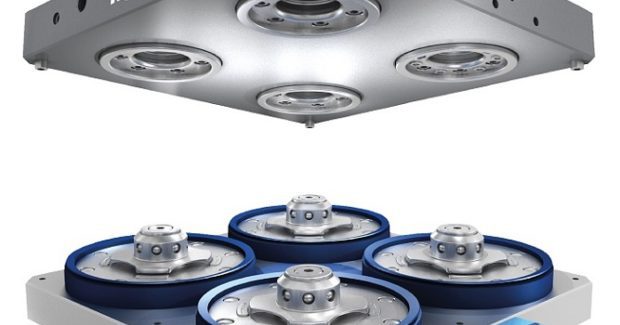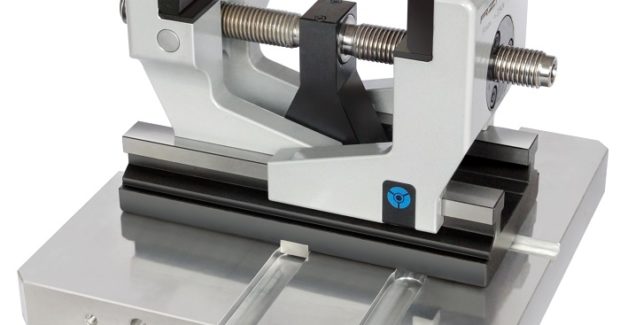How Modular Workholding Increases Overall Spindle Utilization
Want to take the headache out of machine setups for high mix runs that are frequently made from tough materials, demand extreme precision and high quality surface finishes? Modular palletized workholding revolutionizes the alignment process by reducing set up times up to 90 percent, providing safe clamping forces, tighter tolerances, and higher transfer repeatability.
Posted: October 16, 2017
Advanced modular palletized workholding technologies take the headache out of machine setups. These systems revolutionize the alignment process, can reduce set up times by as much as 90 percent, and provide safe clamping forces as well as tighter tolerances and higher transfer repeatability. One such high-tech modular clamping system that uses a single locating point in the center of the base unit as the absolute zero reference point for the whole system is the Power Grip Zero Point Clamping System. This center position always remains constant, and even remains unaffected by thermal deviations. The system also has multiple power clamp units (usually up to four), however, with each power clamp unit the location is set at the time the system is manufactured, and again, based on the zero point center retention principle.
Conventional pallet systems, on the other hand, set their system zero point fixed at one of their multiple power clamp positions. This setup references dimensions from the zero holder to the other power clamp positions, as well as to the center of the pallet itself. Such systems are susceptible to location errors when exposed to thermal deflections. Conversely, shops can easily align zero-point clamping systems because once the base holder is set and located on the machine tool, the system is ready. In addition to hassle-free part location, the Power Grip Zero Point Clamping System self-centers for fast and accurate loading. Pallets can be as much 2 mm off center from the base unit and the system will still easily locate and clamp the pallet properly. These systems are also self-balancing to further enhance accuracy and precision, which makes them highly suitable for automation integrated handling.
One of the major advantages of advanced zero-point clamping systems such as this is the tremendous force that secures each clamping unit. Pneumatics in each clamping unit secure the pallet to the base with up to 1,700 daN (3,740 ft-lb) without re-clamping, and with up to 2,800 daN (6,160 ft-lb) at 6 bar of air pressure with re-clamping, per each clamping unit. This equates to a total of over 11 tons, or 26,640 ft-lb of clamping force to hold down the four-clamp pallet. With all of this force securing the pallet, these systems are well suited for very tight tolerance applications that demand a high degree of repeatability. For instance, a milling machine equipped with a zero-point clamping system will produce parts with as little as 2 µm of transfer location repeatability through 750,000 clamping cycles, air-cushioned with conical centering and leveling system.
Pallets of all types expand and contract during use due to temperature shifts. However, with one zero point, advanced pallet systems maintain their position throughout machining, which means that workpieces are free from the errors that would otherwise occur due to incorrect offsets. Base units of zero-point clamping systems are typically carriers that get bolted onto a machine’s standard table, rotary table or directly on a turning machine’s spindle for applications up to 6,000 rpm. Four clamping units secure pallets to the base. The pallets hold vices and chucks, as well as parts clamped directly to the pallet. Today’s advanced clamping systems can be used on machine tools, EDMs and measuring systems. This flexibility allows shops to quickly transfer parts from one process to another without spending significant time setting up parts on different tables. Such zero-point systems are also readily incorporated with automation and end-of-arm robotic gripping technologies.
Zero-point clamping systems streamline production in both high volume and high mix production. Modular zero-point clamping systems enable shops to set up parts offline to increase overall spindle utilization. The strong clamping forces, high repeatability and short set up times of zero-point clamping systems make them particularly effective for shops in the automotive, medical, aerospace and watchmaking industries. Parts for these sectors are frequently made from tough materials, demand extreme precision and high quality surface finishes, along with (in the case of automotive) high volume production. Zero-point systems enable shops to overcome all of these challenges.











